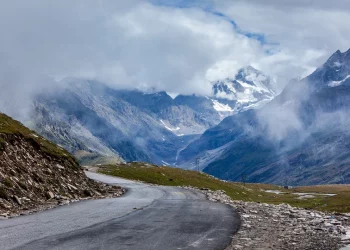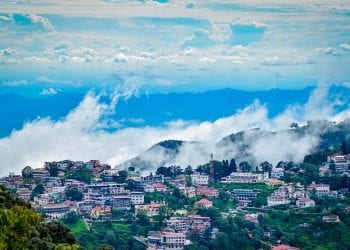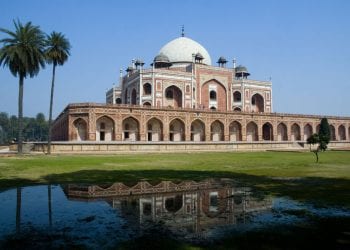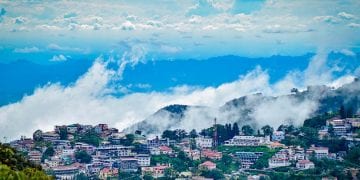Exploring the Divine Temples of Warangal
The city of Warangal belongs to the state of Telangana. Awarded as the ‘best heritage city’ in 2014, Warangal has a rich history and culture. Earlier known as Orugallu, Warangal was the capital of the Kakatiya dynasty during the 11-century. Dotted with many exemplary pieces of Kakatiya style of art and architecture, the heritage site of Warangal has been chosen for preservation under the HRIDAY scheme by the Indian government. The city is home to three monuments, the Warangal Fort, the Ramappa Temple, and the Thousand Pillar Temple, which are under consideration for being recognized as UNESCO World Heritage Sites.
Top 12 Temples To Visit In Warangal
- Bhadrakali Temple
- Hemachala Narasimha Temple
- Padmakshi Temple
- SomeswaraLaxmiNarasimhaSwamy Temple
- Kulpakji Jain Mandir
- Mettu Ramalingeshwara Swamy Devasthanam
- Ramappa Temple
- Thousand Pillars Temple
- Ghanpur Group of Temples
- Govindarajula Gutta Temple
- Sri Swayambhu Temple
- Siddeshwara Temple
1. Bhadrakali Temple
One of the most significant temples in Warangal, the Bhadrakali Temple is situated on a hillock next to the calming Bhadrakali Lake. As a significant deviation from the circular pillars found in Kakatiya style of temple architecture, the square pillars of Bhadrakali Temple mark the victory of Chalukya dynasty over the Kakatiya’s. Built in 625 AD, a unique feature of this temple is the eight-armed stone idol of Goddess Bhadrakali sporting pleasing eyes and holding a weapon in each hand. The temple is closely associated with the renowned Koh-i-Noor diamond, which was believed to be a part of the left eye of Bhadrakali’s idol. Bhadrakali’ svahana (consort), the lion, sits opposite the sanctum sanctorum. A grand dwajasthambam (flagstaff) and a bali-peetam (pedestal for animal sacrifice) find home in the temple complex. India’s largest, and first geo-bio-diversity cultural park is being developed next to the Bhadrakali Lake.
Timings: 5:30 AM to 1:00 PM, 3:00 PM to 8:00 PM
2. Hemachala Narasimha Temple
A walk through the dense forests of Hemachala will land you at the steps of Narasimha Temple, which is situated on a hillock. The Narasimha idol self-impregnated in a wall, and is unique in many ways. It is believed it is the only Narasimha idol ever to be in a standing position. The chest of the idol feels soft like human skin. Impressions of the finger are visible when the skin is pressed. As per faith, this is because the benevolent Goddess Lakshmi also resides in the idol’s chest. Most interestingly, the idol’s navel (boddu) secretes a fluid, which is called ‘cheemu’ in Tamil, and is distributed to the devotees as prasad. A natural water spring, ChintamaniJalapatham, flows nearby, and devotees believe its waters have medicinal qualities.
Timings: 8:30 AM to 5:30 PM
3. Padmakshi Temple
Surrounded by a picturesque lake, the Padmakshi Temple is located on a hillock in the centre of the town of Hanamakonda. The surrounding area, earlier called ‘basadi’, was an important seat for Jainism. One of the most popular temples in Warangal, this was earlier a Jain temple, which later got converted to a Hindu temple. The temple features several beautiful statues of Jain tirthankaras. The most striking is the image of Parsavanatha in the sanctum sanctorum with the Padmakshi idol to his left. The Padmakshi idol changes her form throughout the day – she is a baby girl in the morning, a young girl in noon, and an old lady by evening. All the idols are carved out of live rock, and have been recently retouched. A unique feature of the temple is the Annakonda Pillar at its entrance. Made of black granite stone, the striking pillar is a quadrangular column with four faces. The Bathukamma Festival is celebrated with great fervour, when lakhs of women congregate here and immerse flowers in the Padmakshi Pond.
Timings: 6:00 AM to 6:00 PM
4. Someswara Laxmi Narasimha Swamy Temple
The town of Palakurthi was named after well-known Telugu poet Palkuriki Somanathudu. This area was an important seat of the Veera shaivisim cult, a 6000 year old liberal Hindu sect, which rejected caste and class teachings and flourished mainly in South India. Atop a hillock in Palakurthi, lies the Someswara Laxmi Narasimha Swamy Temple. It houses two caves – each dedicated to the worship of Lord Shiva and Lord Vishnu. The parikrama (circumambulation) of the temple is thus naturally formed by the path along the surrounding hills. Both sides of the entrance to the inner hall depicts black stone carvings of dwara palikas (gate keepers) resembling Shiva in nataraj (cosmic dancer) pose holding the iconic damru (drum) in one hand. Entrance to the Shiva temple is graced by a Nandi bull. The temple in the other cave is dedicated to God Vishnu worshipped in the form of Lakshmi Narasimha Swamy.
Timings: 6:30 AM to 7:30 PM
5. Kulpakji Jain Mandir
One of the most popular religious sites, this renowned 2,000 year old Jain temple is located in the village of Kolanupaka on the Hyderabad-Warangal Highway. During the Kakatiyas Period, Jainism flourished in Kolanupaka and it became an important center of pilgrimage specifically for the svetambara Jains from South India. Idols of three Jain tirthankaras (spiritual teachers) – Rishabhanatha, Neminatha, and Mahavira – are housed in the temple. The idol of Rishabhanatha, the first tirthankara, is carved of blue stone and is famously known as ‘Manikyaswami’. As per legend, this Manikyaswami image was earlier worshipped by the wife of Ravana, Mandodari. The idol of Mahavir, the last tirthankara, is carved out of monolithic jade stone. Built of red sandstone and white marble, the temple features several ancient Jain inscriptions. The twelve armed idol of Padmavati is different from the usual idols, which feature four arms.
Timings: 5:00 AM to 8:00 PM
6. Mettu Ramalingeshwara Swamy Devasthanam
Madikonda was popular as a place where Telugu literature flourished. Also known as Manigiri, this area has four historical temples. The most famous amongst them is the Rama Lingeshwara Swamy Temple – seen as a striking formation by two rectangular rocks balanced on top of a hill with rock-cut steps, famously called mettu gutta in Telugu. The complex houses two temples, dedicated to God’s Shiva and Rama. The complex is surrounded by many small water bodies and sprawling rock formations. Many other remnants of constructions from the Kakatiya dynasty are found here. This area in Warangal is slated to be developed as part of a spiritual tourism circuit.
Timings: 6:00 AM to 12:00 PM, 4:00 PM to 6:30 PM
7. Ramappa Temple
This 11-century temple built during the Kakatiya dynasty is an exemplary exhibit of Kakatiya art and architecture. Also called the Ramalingeswara Temple, the construction of Ramappa Temple took 40 years. Built by a sculptor called Ramappa, this is probably India’s only temple named after its craftsman. Situated in Palampet village, it is one of the most famous temples in Warangal. Ramalingeswara is the presiding deity of this Siva temple. The main complex is built of red sandstone. In the centre of the sanctorum, a Shiva lingam rises from an elevated pedestal, the yoni-peetha, which is made of black basalt. The exterior columns feature big brackets of black basalt carved in the shape of mythical animal, and female dancers and musicians. The temple roof, which is made of bricks is so lightweight that it can float on water. Two small shrines dedicated to God Shiva flank both sides of the main temple. A massive Nandi bull stands facing the Shiva’s shrine.
Timings: 6:00 AM to 6:00 PM
8. Thousand Pillars Temple
Also known as the Rudreswara Temple, or locally as the Veyisthambala Gudi, the Thousand Pillars Temple is an architectural masterpiece. Built under Kakatiya King Rudra Deva, this 12-century temple features exceptional Kakatiya art. The most striking aspect of this temple architecture was its 1000 pillars, none of which obstructed the walking path. The main structure is shaped like a star. The temple is locally known as trikutalaya, one with three shrines, each dedicated to Lord Surya, Lord Shiva, and Lord Vishnu. The foundations are strengthened using sand box technique, displaying the exemplary skills of Kakatiya craftsmanship. A massive Nandi bull carved out of a monolithic black basalt rock sits at the entrance to this Shiva’s shrine. An idol of Ganesha sits in the left side of the sanctum sanctorum. A huge porch, the kalyana mandapam, sits right in front of the main sanctum sanctorum.
Timings: 5:00 AM to 9:00 PM
9. Ghanpur Group of Temples
The group of temples at Ghanpur refers to a cluster of 12-century temples also famously known as Kota Gullu. Built during the Kakatiya dynasty, almost 20 to 22 temples of different shapes and sizes are found in the complex. The biggest amongst these is a temple dedicated to Shiva, which can also be identified as the main temple. Its walls, porches, and balconies feature exquisite carvings, and the doors depict scenes from the Shiva Purana. The walls, gateways, and ceilings of these temples display exemplary rock-cut architecture, featuring seamless carvings of flowers and figures from solid granite rocks. The complex houses many beautiful mandapams (porches), such as the spectacular Sabhamandapa porch. Sculptures of salabhanjikas (female dancers), and mythological characters like Gaja Kesari (half-human half-lion form) exhibit an architectural marvel.
Timings: 6:00 AM to 6:00 PM
10. Govindarajula Gutta Temple
The small village of Govindarajula Gutta is home to many famous temples. Amongst these, a small temple located on top of a gutta, or hillock, is of special importance. Devotees need to climb a flight of almost a 100 steps to reach the Govindarajula Gutta Temple, which is dedicated to Lord Ram. A smaller temple dedicated to Ram’s devotee, Lord Hanuman, sits at the foothill of the hillock. A massive ratha (chariot) built of precious stones sits next to the temple. It is believed that the chariot was built by the Hazaris of Warangal. The temple witnesses large gatherings of worshippers during the Rama Navami Festival.
Timings: 6:00 AM to 12:30 PM, 4:00 PM to 7:00 PM
11. Sri Swayambhu Temple
This historic 846 years old temple built under the Kakatiya dynasty was once one of the most significant religious sites for the Kakatiya rulers. Situated inside the legendary Warangal Fort, this temple is dedicated to Lord Shiva, who is worshipped in swayambhu (self-manifested) linga form. Ruins of the temple lie in the centre of the fort, which includes four free-standing 33-feet tall ‘entry gates’ featuring exquisite carvings of flowers, lotus buds, mythical animals, looped garlands, and birds. The intricate carvings on walls and ceilings, like those of Perini dancers, give a deep insight into the culture and traditions of Kakatiya dynasty. The complex initially had over 23 shrines with embedded precious gems, but most of them were plundered.
Timings: 9:00 AM to 8:00 PM
12. Siddeshwara Temple
Located near Hanamkonda, this 3-century AD temple features a Chalukyan architectural style. Surrounded by hills lying next to a water body, it is one of the few Paschimadwara Mukha (entry gate faces west) temples in India. The temple features intricate carvings and sculptures. The temple is dedicated to Lord Shiva who is worshipped in lingam form. The festival of Maha Shivaratri is celebrated with great pomp, when the entire complex is decorated with flowers and lights.
Timings: 6:00 AM to 6:00 PM
Fortresses, temples, lakes, and stone gateways – the many monuments built by Kakatiyas earned Warangal a popular reputation for art and architecture, and guided its way to become a famous tourist destination. Some other popular attractions in Warangal include the Kazipet Dargah, Ursu Gutta, Erragattu Gutta, Waddepally Lake, Dharmasagar Lake, Ekashila Lake and garden, Laknavaram Cheruvu, Kakatiya Musical Garden, Kakatiya Zoological Park, Kush Mahal, and the Regional Science Centre. Warangal was also chosen to be developed as a ‘smart city’ under the smart-cities mission. With a touch of old and new, Warangal offers a colourful experience for anyone looking forward to explore the city.
P.s. You might like this related resource:
Recent Posts
Top Picks

- OYO
 15 April, 2024
15 April, 2024 - Cultural Tour

- OYO
 15 April, 2024
15 April, 2024 - Cultural Tour

- OYO
 15 April, 2024
15 April, 2024 - Cultural Tour

- OYO
 15 April, 2024
15 April, 2024 - Cultural Tour

- OYO
 15 April, 2024
15 April, 2024 - Cultural Tour

Please rotate your device
Please go back to portrait mode for the best experience




 April 15, 2024
April 15, 2024 



